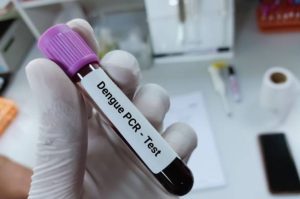Shocking Heartbreaking 2: Kolkata witnessed another tragic blow this week, as dengue claimed the life of a 35-year-old man, Arijit Das, from Parnasree in Behala, becoming the city’s second dengue death in just seven days. Das had developed fever last Saturday and tested positive for dengue the following day. Initially taken to SSKM Hospital, he was redirected to Sambhunath Pandit Hospital due to bed shortages.
Doctors there did not advise admission, and his family later shifted him to Vidyasagar State General Hospital in Behala, where he initially began to recover. However, a sudden deterioration in his condition led to his transfer to the School of Tropical Medicine. Sadly, he passed away during the admission process on Thursday, despite urgent medical efforts. His death follows that of 75-year-old artist Swaroop Mukerji, who also succumbed to dengue earlier this week. Unlike Mukerji, who had underlying conditions, Das had no known health issues—raising deep concerns about the unpredictability of the disease.
Following Das’s death, the Kolkata Municipal Corporation (KMC) intensified its vector-control operations in Parnasree, a neighborhood classified as high-risk for dengue. The civic body deployed additional teams for spraying, fogging, and eliminating breeding grounds. Officials also began investigating why the patient was transferred multiple times while in critical condition, examining whether systemic gaps contributed to delays in treatment. While overall dengue numbers in Kolkata remain relatively low this year, health experts caution that conditions are ripe for a surge due to intermittent rainfall and stagnant water accumulation.


Municipal authorities emphasize that pre-monsoon vector-control initiatives helped keep infections comparatively lower, but recent deaths are a reminder that no margin of complacency exists. (WHO on Dengue Prevention)


Experts highlight that dengue severity does not always depend on pre-existing illnesses. Dr. Bhaskar Narayan Chaudhuri, a senior microbiologist at Peerless Hospital, explains that immune reactions can escalate the disease even in otherwise healthy individuals. He urged hospitals and civic authorities to strengthen coordination, ensuring that patients receive timely admissions to prevent fatal outcomes.
The Aedes aegypti mosquito, the primary dengue carrier, thrives in Kolkata’s current humid conditions and frequent showers, turning waterlogged pockets into breeding hubs. To combat this, civic health units are now coordinating with neighboring municipalities such as Maheshtala, Dum Dum, and Rajpur-Sonarpur to share resources and improve preventive coverage. The collective goal is to build a citywide shield against the looming threat of seasonal dengue spikes. (CDC: Dengue Transmission)
Shocking Heartbreaking 2: Civic Push for Stronger Prevention
In response to the second death in a week, KMC rolled out a more aggressive dengue prevention strategy. Special clean-up drives have been scheduled in Behala’s dengue-prone zones, with teams removing stagnant water from residential complexes, marketplaces, and public spaces. Civic officials urged residents to take personal responsibility by covering water containers, discarding unused buckets or tyres, and ensuring rooftops remain free of water collection.
Authorities stressed that Parnasree had been flagged earlier as vulnerable, making this intensified focus a vital public-health move. Meanwhile, health officials continue reviewing the hospital transfer sequence of Arijit Das to identify any lapses and prevent a repeat in future cases.
Hospitals across Kolkata are reporting a steady rise in dengue admissions, though most cases remain mild. Doctors at leading facilities like Ruby General, Peerless, and Woodlands say platelet counts among patients are generally stable, but warn that even mild cases can escalate quickly. The city’s weather—marked by alternating sunshine, humidity, and rain—creates the perfect breeding ground for mosquitoes. Authorities caution that the situation could worsen in September if preventive measures falter. Public awareness drives, door-to-door inspections, and school-level dengue awareness campaigns are now being fast-tracked as part of the KMC’s larger strategy. (National Vector Borne Disease Control Programme)
Shared Vigilance Is the Key
The untimely death of Arijit Das serves as a stark warning that dengue spares no one, not even the young and healthy. Health experts underline that community cooperation is just as critical as government action. Each household must monitor water storage practices, regularly clean flowerpots and overhead tanks, and report mosquito breeding sites to civic bodies. Authorities urge residents not to delay seeking medical help if fever persists beyond two days, especially during peak mosquito season. Collaborative vigilance between citizens, civic authorities, and hospitals can decisively reduce the risks of further fatalities. This recent loss should therefore be seen not only as a personal tragedy but also as a citywide call to action.
Also read: Home | Channel 6 Network – Latest News, Breaking Updates: Politics, Business, Tech & More


